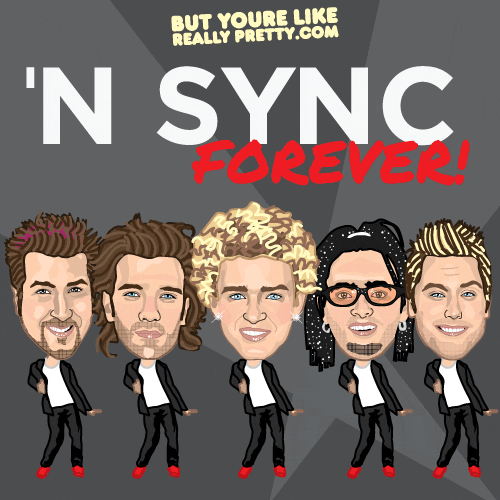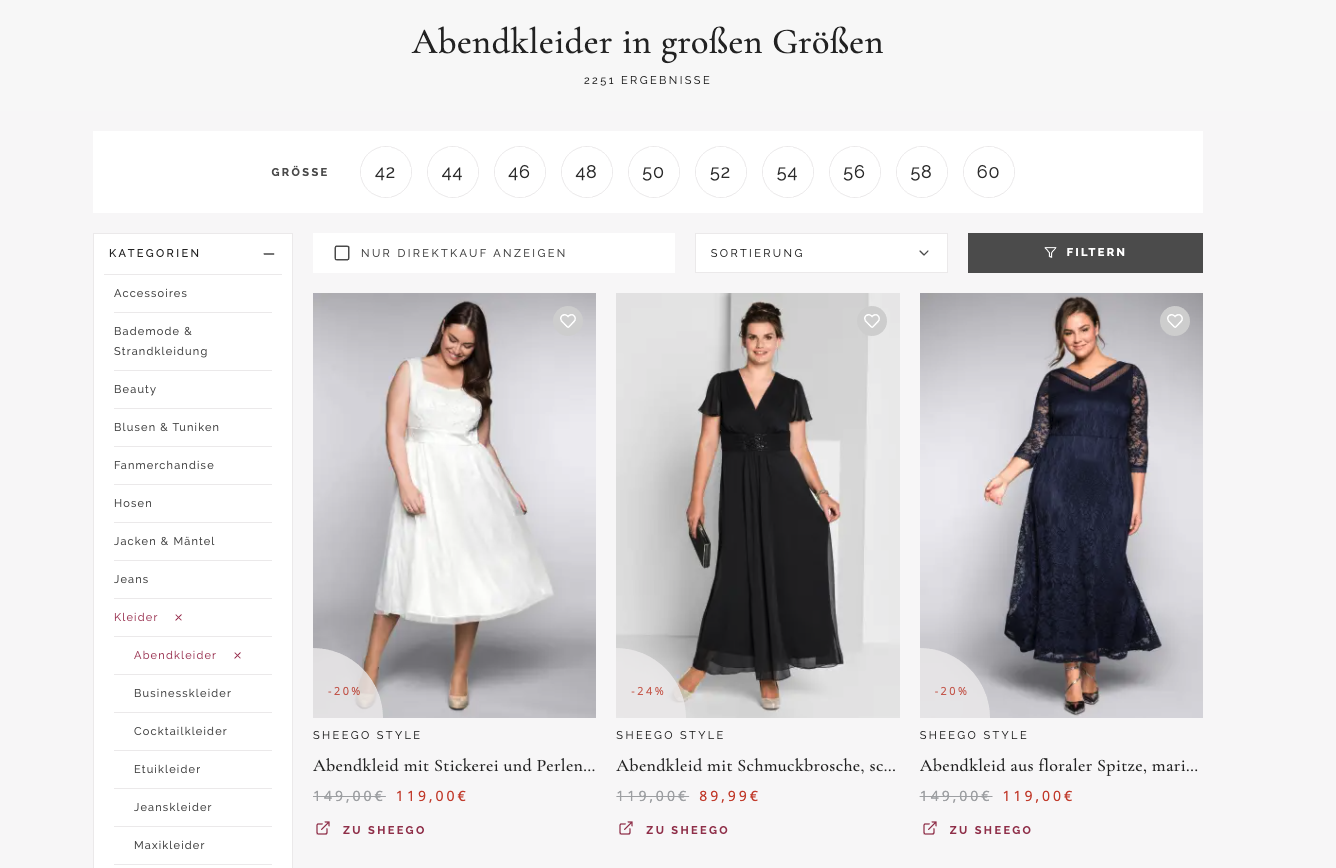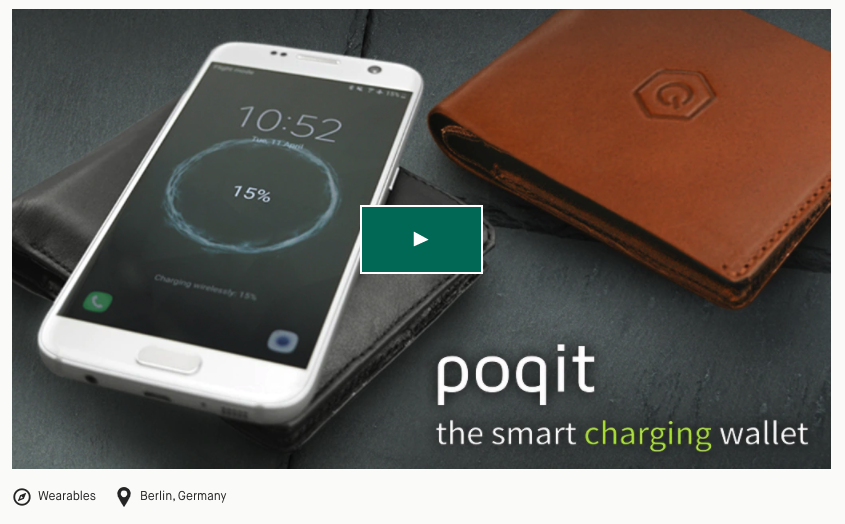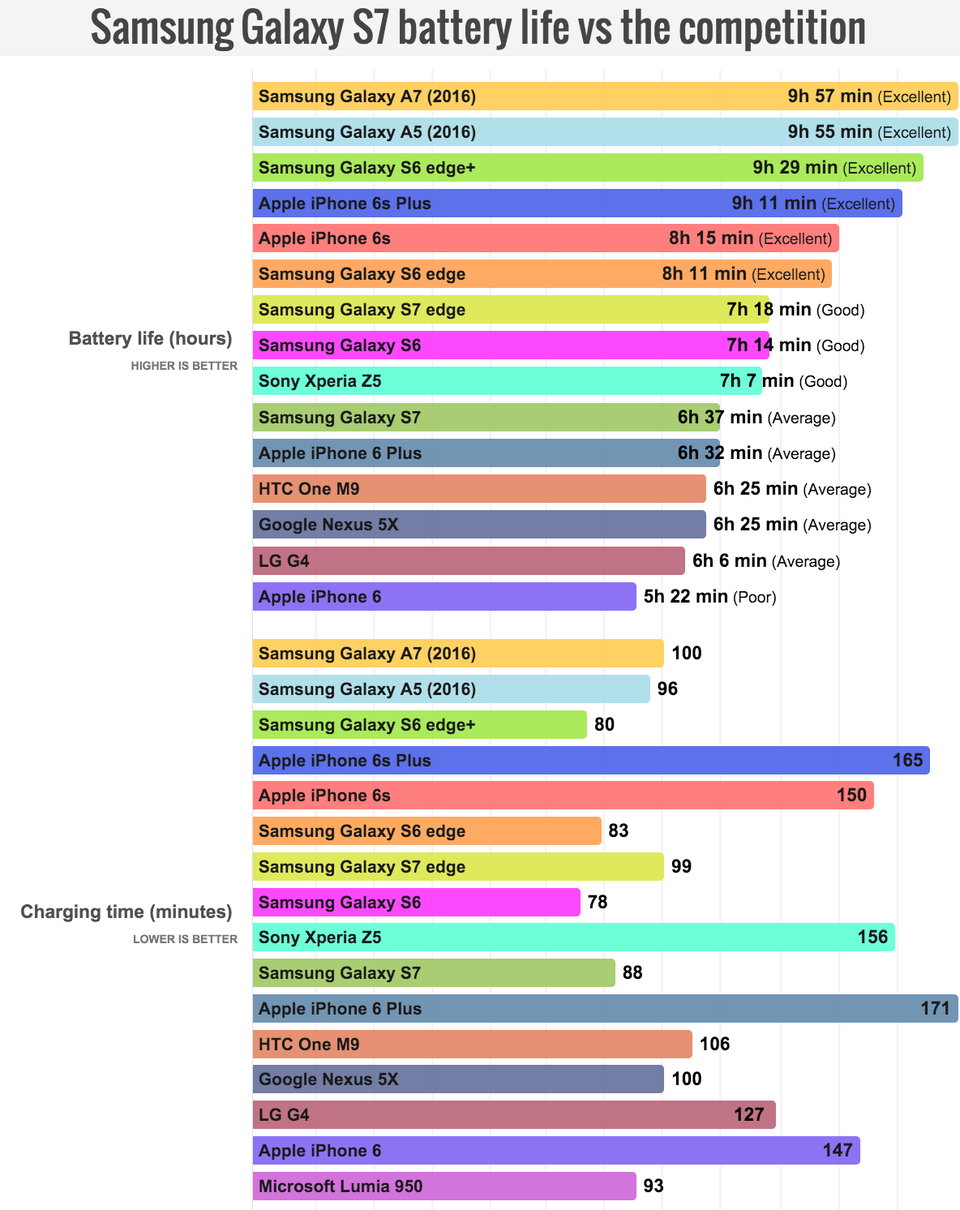Product market fit is one of those things that is very much its own unicorn inside of the startup world. A lot of people hear about it, a lot of people talk about it, but not very many people have achieved it.
Make no mistake about it, if you’re planning on founding your own startup, or if you already have founded one, product market fit is the most crucial thing you need to focus on.
Yep, I said it. Product market fit is more important than getting investments, more important that developing your product, more important than hiring, it is the single most important thing you need to focus on.
Why? Because this is what is going to keep your startup alive, and will keep it growing successfully over time. Without product market fit, in time the investments, the sales, the hiring, the everything simply stops.
 Do proper research for your startup and its product market fit
Do proper research for your startup and its product market fit
What is product market fit?
The term product market fit was first coined by Marc Andreessen, an American Entrepreneur, in 2007.
Since then, there have been many iterations of this term, but in our startup accelerator, we want to break it down for you as simply as possible.
A simply product market fit definition is when your customers, your product, and your company’s values are working in perfect harmony.
Customers & Product Market Fit
It sounds simple, but is often overlooked in the never-ending amount of tasks that a new startup founder has to face, but your customers come first.
They should know exactly why your product creates value for them, and you should be able to consistently deliver this same experience for new customers.
Do this consistently, and your customers will eventually become evangelists - a fancy word for people who recommend a product or service to their friends and family. (Think a die hard Apple Fan Boy)
Your product works for your customers
On the topic of prioritizing customers, you’ve got to make sure your product is reflecting their needs not yours.
I've run into this countless times and it drives me mad when the conversation resembles something like this:
Startup Founder: - So we recently made a change to our product that does XYZ.
Me: - Oh cool, tell me about how that is going to improve the experience for existing and/or new customers.
Startup Founder: - Well, we think…
STOP. RIGHT. THERE.
 Stop doing things based on opinions.
Stop doing things based on opinions.
If the words we think ever come out of your mouth when describing product changes, you’re not doing it right. Everything your startup does to improve the product must be based on customer feedback and trends. (More on this later).
Your company’s values are also aligned with this journey
Obviously, one of your startup’s values is going to be to become profitable. I get that. But when we talk about product market fit, it isn’t always just about profit.
There’s going to be a lot of synergies happening all at once in this triangle, and you are responsible as a founder for making sure your startup is equipped to handle that.
That includes how you research, the questions you’re asking people, the flexibility to make changes, and everything else.
How do I know when my startup has achieved product market fit?
Depending on the business, there are a lot of varying definitions for determining when, and if, product market fit has been properly achieved.
Even within our own startups, we tend to see different benchmarks available.
That being said, we are big fans of these two indicators that the awesome folks at HubSpot came up with:
- If the majority of your user base would be deeply disappointed if your product or service disappeared tomorrow - you’ve got a pretty solid product market fit.
- If the demand for your product is higher than your ability to produce the product or service - you’ve got a pretty solid product market fit.
A small side note, this article is being written during the COVID-19 Pandemic, can we argue that toilet paper manufacturers around the world have achieved perfect product market fit? :-)
 Perfect product market fit?
Perfect product market fit?
Now that we understand what product market fit is and why it is relevant for startups, let’s take a look at some actionable things you can do today or in the near future to help you improve this area of your business.
7 Product market fit strategies for your startup
1. Take the time to properly create and maintain your buyer personas
We cannot stress this enough, your startup’s buyer personas are of the utmost importance to create properly from the start. Creation and maintenance are of equal importance in this regard.
If you don’t know who you’re selling to, and why you should be selling to them, how can you even begin to improve your product?
We’ve covered this topic extensively in its own blog article, be sure to read that in detail and understand it (linked above).
2. Deeply analyze your competitors and the holes in their solutions
It’s 2020, guess what, you have some kind of competition somewhere out there.
Figure out who those people are, and take a good long look at their product. If you can afford it, buy it yourself and really understand and use it. In war we say you cannot beat your enemy unless you understand your enemy, and this is kind of the same thing.
Ok, maybe it’s not that dramatic, but you get what I am saying.
When a prospect reaches the decision making phase of their buyer’s journey, there is a high probability that they have also looked into your competitors.
Take this information and centralize it, and make it easy to find within your organization.
This is important stuff, and everyone in every department should be on the same page here. Especially sales and marketing, for these two departments there is no exception.
As a founder, make sure this happens and that everyone in your organization knows what you're up against, and why your product is better.
Being ahead of prospective customers in this respect can not only help you sell more effectively, it helps you keep your product ahead of the competition.
3. Gather customer intelligence - the old fashioned way
This is going to be where a majority of the leg work exists when you attack your product market fit strategy, you’ve got to be in touch with your customers AND other areas of your business constantly.
If you’re still formulating your minimum viable feature set…
This means you don’t have anything for your prospective customers to hold or use yet.
This also means you likely don’t have any customers yet. (Hey, if you already have paying customers without a product, then more power to you!)
This means you’ve gotta create some focus groups! That’s just a fancy way of saying you need groups of people who fit one of your buyer persona descriptions.
Spoiler alert, you need one focus group per buyer persona.
And now you’ve got to lead some interviews with them. In person is best, as people express themselves differently in person than they do via distance communication.
If you can’t meet in person due to distance or a pandemic (lol), then video conferencing is necessary. Phone calls with audio only are not going to cut it.
My favorite question to lead these discussions with is - What would you pay for these features?
This is such a great question because it is going to trigger a lot of emotional response in your interviewees, which is what you want.
Secondly, it is going to open up a lot of other questions you can follow up with, such as:
- Why do you think that is a fair price?
- Why do you only offer to pay so little?
- Why would you be so comfortable spending so much for this?
- How would these features improve your life?
- What similar offerings are you already paying for?
The main takeaways here are write down everything and use open, non-leading questions. Questions that can be answered with a simple yes or no are not going to give you too much feedback.
FAQ - Where can you find these people for these early-stage focus groups?
A valid question, and one that unfortunately doesn't have a clear-cut answer. If you're fortunate enough to know people who are in your focus group categories such as friends, family, or coworkers, start there.
If you've started collecting emails for newsletters or are already active on social media, you can find people here too. Make an event out of it, and make it fun, remember: time is money, so people won't do stuff unless they're getting something out of it.
That doesn't mean you have to pay these people, but offer them perhaps heavy discounts when the product launches, early access to things, delicious cake, or all of the above.
If you already have your minimum viable product prototype available…
This means you have something that your prospective customers can do something with. Be it a first version of a product online, or the first 3D printed model of your hardware product, you have something they can use and interact with.
In this phase, you likely still don’t have paying customers yet. This is the first prototype remember?
So from here, you’ll typically want to switch from focus groups to one on one interviews.
Same rules apply, face to face is best, video is a distant second best option, audio only doesn’t work because body language will tell stories that words won’t.
As far as who you want to interview here, I’d recommend taking two types of people from the above focus groups that were interviewed during the features phase:
- Someone who was really engaged during the focus group.
- Someone who was not so super engaged during the focus group.
This will provide you with some sort of “attitude range” to hopefully get varying answers from your interviews.
During the 1 on 1 interview, simply let them use the product.
By now, this person should have a fair understanding of what benefits the product offers, or what problem it solves.
As they interact with the product, take note of everything again:
- Facial Expressions
- Body Language
- Time it takes them to “figure it out”
- Vocal frustration
- Vocal product praise
- Etc.
What we’re looking for here is trends. Users will typically identify the same flaws in the product that you and your team may have overlooked.
Take that feedback, see what aligns with your company’s values, and integrate the feedback that makes sense into the product.
How many interviews do you need to lead at this stage? The more the better, but in our experience with startups, we recommend having this interview with at least 20 different people per persona.
If you’re minimum viable product is out and you are already selling
Pretty self explanatory here, but being in this phase means you’ve already launched something and you’re already actively selling.
In this phase, the hope is that you already have customers.
The main difference in this phase, is that you need to get your sales and marketing teams involved.
First and foremost, sales and marketing need to be symbiotic. They are not two completely different and independent organizations within your company, they should be working together, sharing data and customer feedback, and using it together to create better marketing and sales funnels.
 Yep, your startup needs to be in sync.
Yep, your startup needs to be in sync.
Your job, as the founder, is two things here:
1. Keep surveying existing customers
Just like with the focus groups and the prototype questions, the feedback process never stops. The only difference here is you have more tools at your disposal.
With existing customers, feel free to utilize surveys and NPS tools to keep a pulse on how happy they are with the product they are using.
Same principle applies, if you can, have these conversations 1 on 1 with people in the early phases. The feedback from your earliest adopters is going to be crucial to shape the future of your company and your product.
Remember, we want to find that “pulse” to know that we’re achieving product market fit. So two very good open ended questions you can ask people in this phase are:
- If (insert your product name here) stopped existing tomorrow, how would that effect your life?
- How likely is it that you would recommend (insert your product name here) to your friends and family.
2. You need to be really engaged with your sales and marketing teams
As touched on above, you will need to establish a system in your startup to make sure that sales and marketing are working very closely together.
They should be meeting at least once a week to exchange performance numbers with each other, and to figure out how how they can best support one another.
What you need to be discussing with both teams, are primarily what are the objections and the complaints that customers or prospects are running into?
Like everything else, the name of the game here is TRENDS.
Marketing should have a distinct picture of how campaigns are performing, and how many leads they are passing on to sales.
Sales should have a distinct picture of how qualitative those marketing leads are, AND should also have a good idea of why prospects are not buying, and why existing customers are churning.
These are the things you need to identify, and modify your entire business plan to best address all of these needs.
Bonus points if you already have a customer support team! These guys are usually on the front lines of hearing customer problems and complaints, and if you have established this part of your business already, they should be involved with marketing and sales as well.
4. One persona at a time
You’re a startup, your budget is limited. Trying to make everyone happy at once is going to likely not end so well for you.
So instead, based on your analysis, research, and persona creation, take a long hard look at your data and be honest with yourself - Which persona you can best serve right now?
This is going to allow you to hyper-focus your efforts on one area, and allow the product to evolve better for both yourself and your customers (and your budget).
I want you to focus on quality here, not quantity. I see a lot of founders make the mistake of trying to tackle the biggest persona first, because bigger persona means more people, and more people means more money right?
Well…in theory, yes. Emphasis on theory.
And while this can work, it is much better to roll out your first versions of your product for the persona you can best serve today. Continue analyzing and researching, and evolve the product based on the data you collect.
5. Realize early on, that not all feedback carries the same weight
On the note of not being able to please everybody at once, you’ll go absolutely crazy if you try to implement every change and request that your customers and prospects ask for.
I've been talking a lot about data collection and feedback here, and it is supremely important, but work to define some guidelines on how the feedback you receive can vary, and how those variables rank in importance for your specific startup.
Some common examples of feedback of different importance
Heavy Users vs Not-So-Heavy Users is important if you run a SaaS model. Depending on what your product does, and how long a customer’s life/usage cycle should be, is going to determine what is more important for you in terms of feedback.
Heavy user feedback will be more geared towards U/X and efficiency of the product, not-so-heavy user feedback is typically going to be more geared towards the learning curve of the product, and product support.
Both are very important things to consider, but depending who you are and what you do, one may be more important that the other.
When you get feedback is another thing to consider, because a customer’s feedback at the beginning of their purchase cycle can be wildly different from their feedback after using the product for a year.
Freemium vs paid users is a very typical situation that comes up, as freemium models for SaaS products are becoming increasingly popular. If you’re having trouble converting new users, freemium user feedback is going to be invaluable. If you have a high churn rate, you’ll likely want to focus on paid user feedback.
This is another example of how a symbiotic relationship between marketing and sales can be so effective. In this case, it is typically the marketing team that will be responsible for freemium users, and sales will be in charge of the paid users. Both teams should have a very good udnerstanding of how this circle works.
6. Transparency can really help you out
You know what sucks? Being a paying customer of a product and feeling like my voice is not being heard!
We’ve talked a lot about acting on feedback here, but another good tip is actively communicating that to your customers.
For this I really recommend developing and maintaining a public and transparent product roadmap, where you can interact with your customers and they can do they same.
List what you’re going to be doing, improving, or adding, and why.
This is also a good place to gracefully turn down certain suggestions from customers, where everyone can see the same status.
A good example of gracefully turning down recommendations would be something like:
Thanks for your feedback and suggestions on our product! We appreciate all suggestions we get, but at this time we won’t be implementing XYZ into our current roadmap, as it doesn’t currently align with our company values and other priorities we are currently working on for you.
Boom.
 Droppin it like it's hot
Droppin it like it's hot
7. Pay attention to the current status of the world
I am by no means an expert on economics or financial trends, but it would be beneficial to have at least a general understanding of the economic status of the world.
Extreme example. As I mentioned, at time of writing this we’re in the middle of the COVID19 pandemic, right now is probably not the best time to launch a startup for most people.
Big, but realistic example.Let’s look at two big tech giants, Uber and Airbnb. Yes, both companies are quite innovative and have come a long way since they started.
But they both started at the tail end of the 2000’s going into the teens. The US was in a mild recession, and thus, people were avoiding luxury costs such as travel and taxi rides.
Then sweep in two companies to disrupt both industries, right when people need it most, and you’ve got a very fast and very successful product market fit.
Many lives around the globe would be substantially disrupted if Airbnb and Uber ceased to exist tomorrow.
So pay attention, see what is happening in the world, and how these things may effect your startup.
SpinLab startups and product market fit
It’s always nice to hear of success stories of giants such as Uber and Airbnb, but it’s even better to hear about learnings and experiences from startups that have actually gone through our startup accelerator program.
Product Market Fit Success
Wundercurves is a class 4 alumni from our program, and they have a e-commerce platform that focuses on serving numerous clothing options to plus-sized women online. This was a real problem to tackle, as the majority of sizes offered in traditional stores both on and offline are catered towards “magazine model type bodies.”
At the time of their launch back in 2016, and even currently, there is still no direct competition available on the market in Germany for this vertical. Sure, there are online retailers such as Zalando and About You that are alternatives, but those guys cater to all body shapes and sizes and genders.
 WuCu Evening Wear
WuCu Evening Wear
Based on their early pre-launch research, they determined that roughly 50% of women in this vertical in Germany would find this solution helpful.
Fast forward roughly four years into the future, and the company has grown to have on average 500,000 Sessions on their site per month.
Those are huge numbers being pulled by a startup that in the earlier phases had limited resources.
The timing was good, the need was identified, and their product’s values and benefits were tailored specifically to their personas.
Product Market Fit not-so-great Success
poqit.berlin is also a class 4 startup alumni that went through our program at the same time as Wundercurves mentioned above.
They developed a wallet that was able to charge mobile phones wirelessly. A pretty clever concept at the time: Your phone is getting low on power, simply bust out your poqit.berlin wallet, set your phone on it, and voila power to the masses!
 poqit.berlin Kickstarter Campaign
poqit.berlin Kickstarter Campaign
Sadly, the timing and the demand was just not in their favor, and after a mere two year bout, the company was forced to shut its doors.
Why?
Let’s look at the timing
poqit.berlin planned their go to market for the last 1/2 half of 2017. Their Kickstarter Campaign started offering the wallet at pledges starting at 119€, which would have been 25% cheaper than the future retail price. Meaning the selling price for the wallet in stores would’ve been roughly 150€.
Problem number one is that the prices of power banks started to really drop right around this timeframe. A quick historical search on YouTube finds this video from 2017, which praises finding a power bank with over 12000mAh for less than 20 USD. A power bank of that capacity is even able to charge even most current mobile phones in 2020 at least three full times.
And that is an extreme power bank. If someone wanted something smaller and more portable, which could say, maybe only charge their phone once to get through the workday, it would cost even less.
Problem number two is cell phone batteries in general at this time started to get really good. The infamous days of complaining about dying cell phone batteries were starting to come to their end.
Look at this graph below that was actually published by Forbes in a 2016 article talking about cell phone batteries.
 Smartphone battery life / Photo Credit : Phone Arena / Forbes
Smartphone battery life / Photo Credit : Phone Arena / Forbes
Just looking at the good and excellent ratings, in 2016 we already had nine models on the market that, based on real user feedback, could put out at least 7 hours of battery life on average.
The question at the time was, how much did an average user actually need back in 2016 / 2017?
No comeback in sight for poqit.berlin
Despite the clever and beautiful design, the hurdles were just too big and the product became too niche, very quickly.
For the majority of people, you could get a good wallet and a good power bank that satisfied your needs for less than half the cost of what poqit.berlin would have retailed for.
This quickly restricted their potential market to “tech heads.” Basically people that live to have the latest and greatest gadgets. For the rest of the world, the solution quickly became irrelevant.
Conclusion
It’s a lot to take in, but if there is one thing you must take away from this article, it’s that product market fit is the most important thing your startup needs to focus on.
Beyond that, it’s important to gather customer intelligence, sync up your internal teams, value transparency, and keep an eye on the status of the world as a whole.
If you’ve got any questions about product market fit for your startup, let us know in the comments, we’d be happy to help out!






/RootCamp_Logo-Ecosystem.png?width=200&name=RootCamp_Logo-Ecosystem.png)
/Bitroad_Logo-Ecosystem.png?width=200&name=Bitroad_Logo-Ecosystem.png)



/White%20Versions/stadt_leipzig_white.png?width=130&name=stadt_leipzig_white.png)
/lfca_white.png?width=119&name=lfca_white.png)
/bmwi-white-engl-2022.png?width=573&name=bmwi-white-engl-2022.png)
/White%20Versions/sachsen_signet_white.png?width=90&height=362&name=sachsen_signet_white.png)